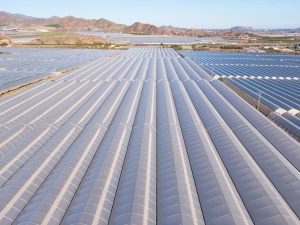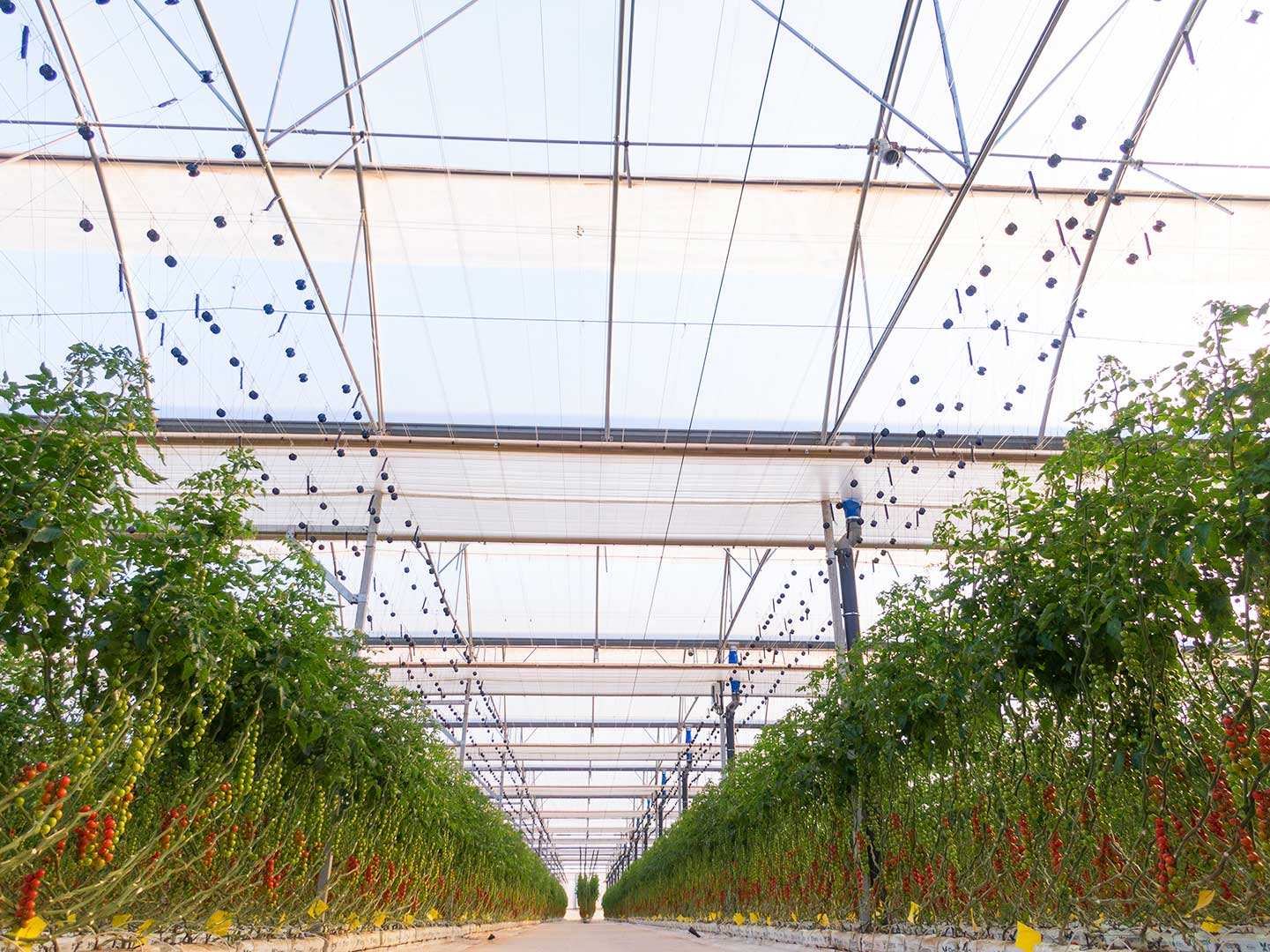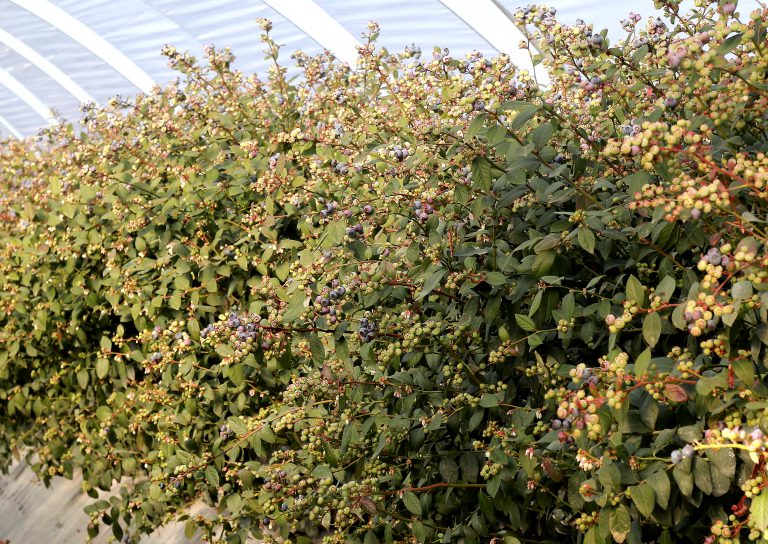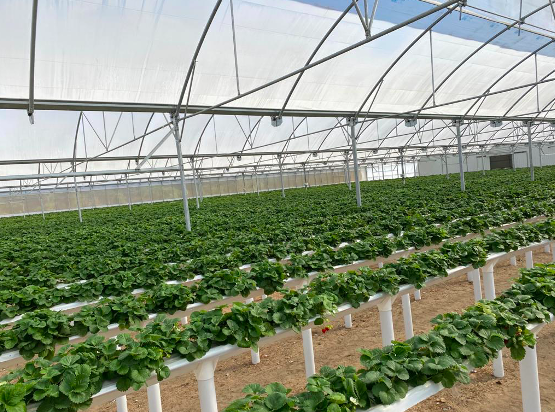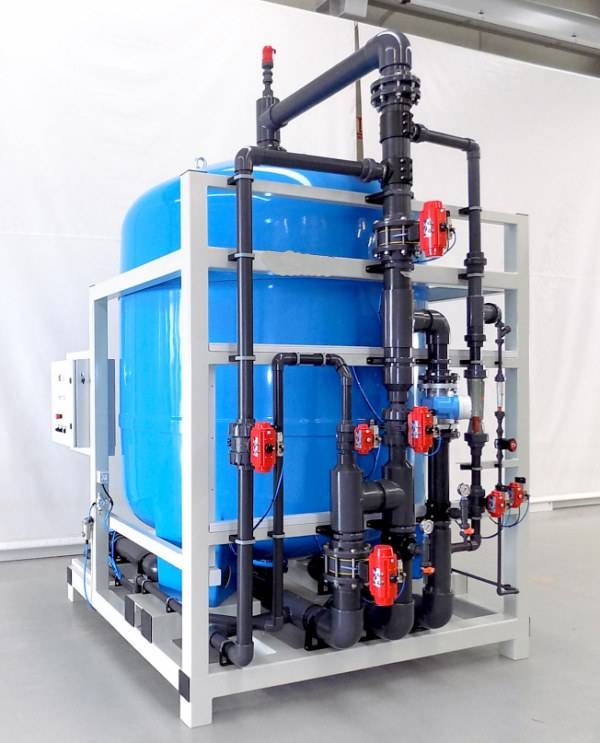Greenhouse technologically equipped to optimise resources, seek better climate control and greater performance in cultural work.
The first results, after its start-up, demonstrate its profitability with a lower use of water and energy and a 20 percent increase in production compared to traditional greenhouses.
The installation occupies a total of ten hectares, with a surface area of two hectares per module to make technical and agronomic management compatible with economic profitability.
In addition, the design has sought to maximise solar radiation by reducing the number of obstacles to the entry of light to make it easier for the plants to photosynthesise.
To contribute to more efficient climate management, passive ventilation systems, automatic energy-saving screens, temperature and humidity probes and a climate station have been installed. All the technology is controlled by climate and irrigation software, which allows all parameters to be measured, programmed and analysed and facilitates decision-making.
For pest control, they have opted for biological control measures and zero residue products to reduce the use of phytosanitary products as much as possible.
They are currently producing cherry tomatoes with hydroponic and automatic drip irrigation, with exhaustive control of drainage and fertilisation to optimise water consumption to the maximum and achieve a zero grey water footprint.
